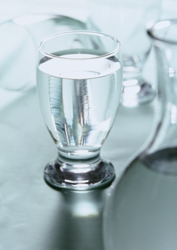Solar treatment with a catalyst for clean water
Every year, there are four billion cases of diarrhoea caused by pathogenic organisms in contaminated water supplies. Of these, 2.2 million people die and most are children. The result of infection is extreme dehydration and malnutrition can result from chronic cases. Timely treatment of infection, especially in poorer countries, can be difficult. Effective water sterilisation is the answer to this problem. During the early 1990's, a cheap effective water treatment known as SODIS was developed which harnessed the synergistic effects of the sun and heating on water. This involves simply placing the infected water in plastic bottles and placing in full sunlight if possible. The method has proved highly successful and incidence of cases has been reduced by 30 to 80%. However, the water sterilised by this method can be unsuitable for storage. The AQUACAT project therefore took up the challenge to find a further cost-effective method where microbial regrowth after disinfection was reduced. The method investigated was based on heterogeneous photocatalysis using titanium dioxide (TiO2) sol-gel films over glass rings. To test the method, the Swiss team based at Ecole Polytechnique Federale de Lausanne took naturally infected spring water. It was then exposed to sunlight in plastic bottles. Water from the different treatments was then assessed for fecal coliforms using the defined substrate test. This involves a colour change which indicates the presence of coliform bacteria. The method using heterogeneous catalysis proved to be more effective against all coliforms than the SODIS technique. For example, on a sunny day, using immobilised TiO2, it took half the time to achieve the same level of disinfection obtained with SODIS. Moreover, no regrowth for total or fecal coliforms was observed and water was kept free from contamination for seven days. The potential advantages of disinfected water that can be stored are self-evident. In arid and semi-arid areas and where conventional means of water treatment have temporarily broken down, this is a cheap simple alternative. There is also no requirement for trained staff or expensive infrastructure.



